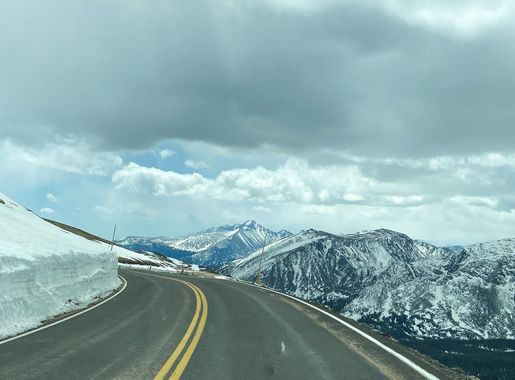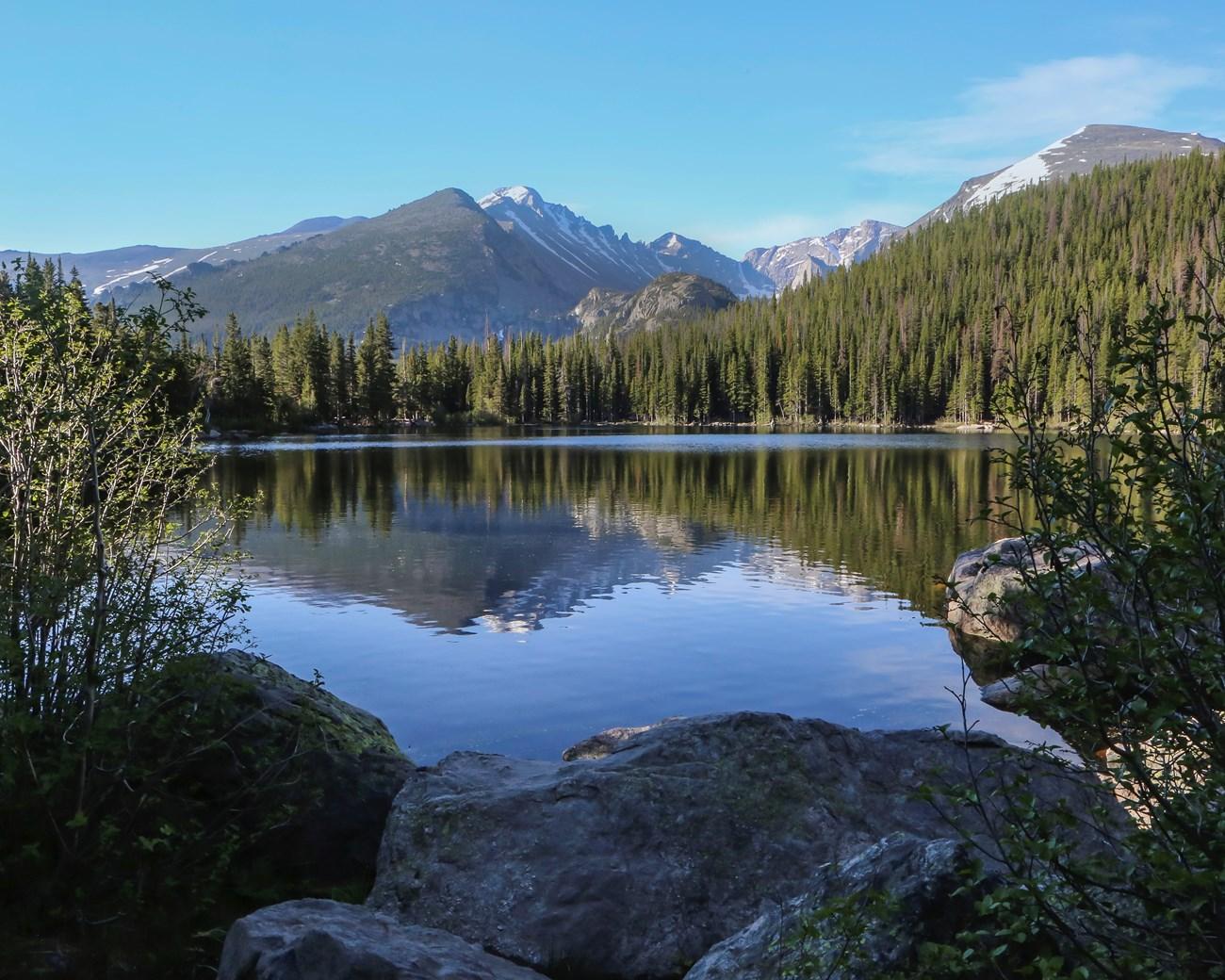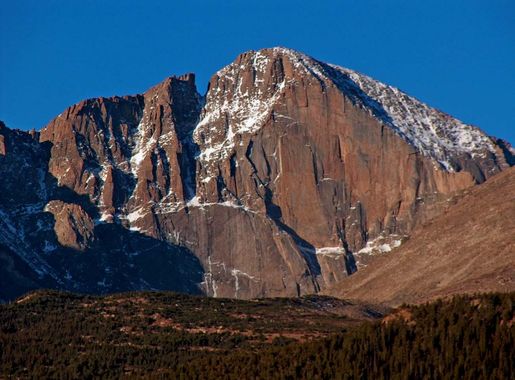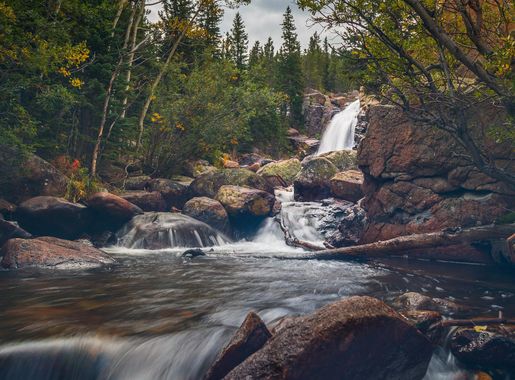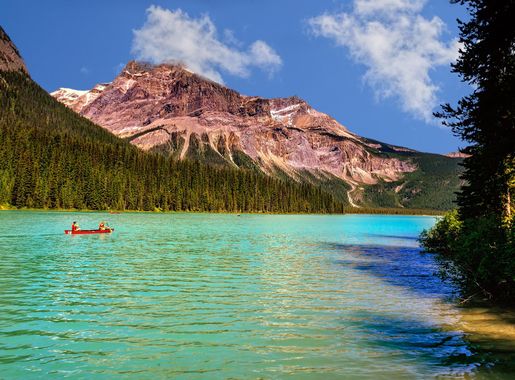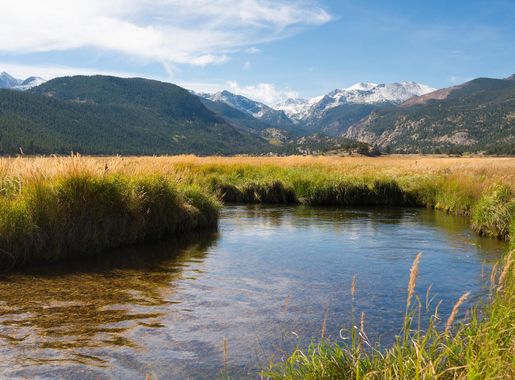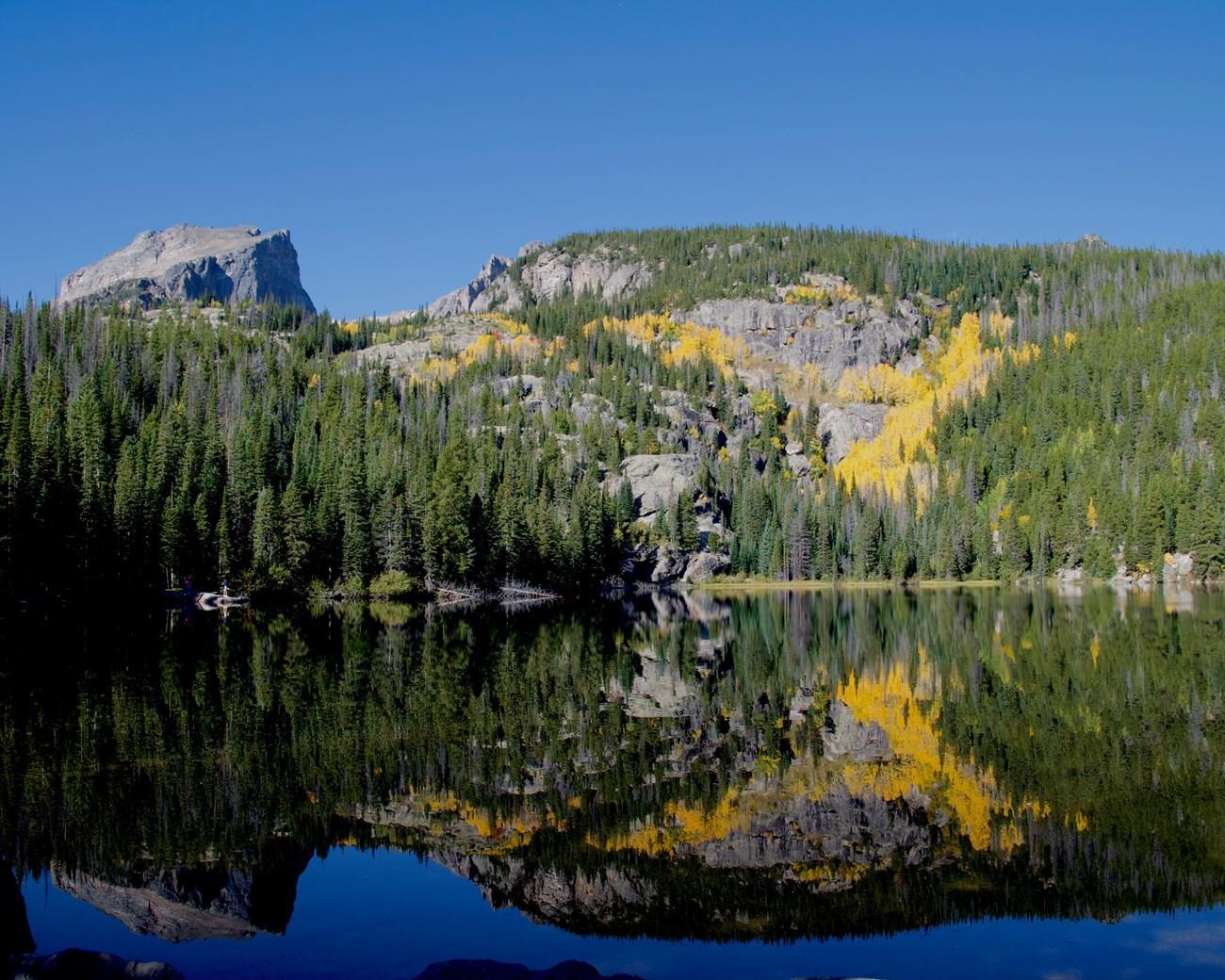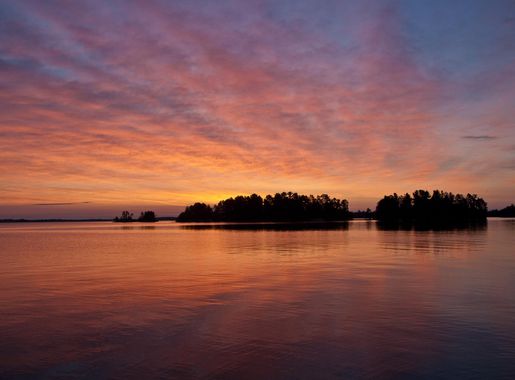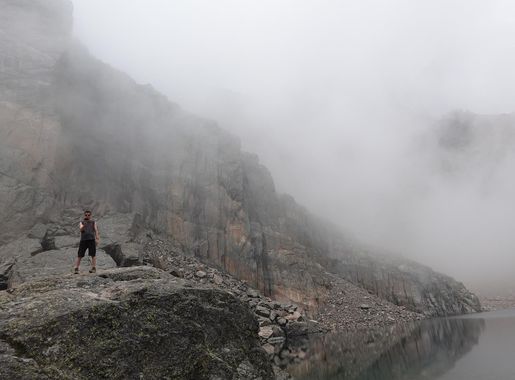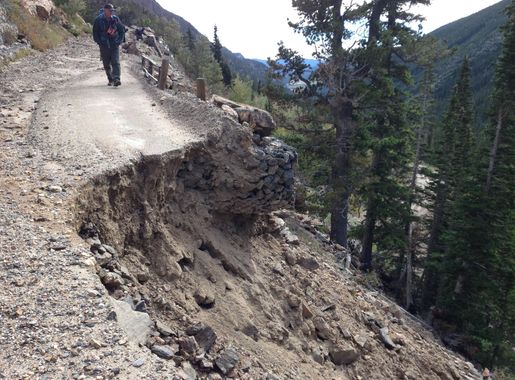
Rocky Mountain National Park: Nature's Majestic Playground
Discover the splendor of Rocky Mountain National Park in Colorado – a haven of diverse ecosystems, wildlife, and outdoor adventures, perfect for every season.
Rocky Mountain National Park, located in Colorado, is a gem of natural beauty in the United States. Known for its breathtaking landscapes, this park offers a diverse range of ecosystems. From alpine tundra to lush meadows, visitors can experience a variety of natural wonders. The park is home to over 300 miles of hiking trails, making it a paradise for hikers of all skill levels. Whether you are looking for a challenging climb or a gentle walk, you will find the perfect trail here. Wildlife enthusiasts will be delighted by the abundance of animals found in the park. Elk, mule deer, and bighorn sheep are just a few of the species you may encounter. The park is also a birdwatcher's haven, with over 280 bird species recorded. For those interested in geology, the park's rugged mountains and glacial features offer a fascinating glimpse into the Earth's past. Rocky Mountain National Park is a year-round destination. In the summer, the wildflowers bloom in vibrant colors, and the weather is perfect for outdoor activities. In the winter, the park transforms into a snowy wonderland, ideal for snowshoeing and cross-country skiing. With its stunning scenery and endless opportunities for adventure, Rocky Mountain National Park is a must-visit destination for nature lovers.
Local tips in Rocky Mountain National Park
- Visit early in the morning to avoid crowds and have a better chance of spotting wildlife.
- Bring plenty of water and snacks, as there are limited facilities within the park.
- Check the weather forecast and trail conditions before heading out, as weather can change rapidly in the mountains.
- Dress in layers, as temperatures can vary greatly throughout the day and at different elevations.
- Purchase a park pass in advance to save time at the entrance.
Rocky Mountain National Park: Nature's Majestic Playground
Rocky Mountain National Park, located in Colorado, is a gem of natural beauty in the United States. Known for its breathtaking landscapes, this park offers a diverse range of ecosystems. From alpine tundra to lush meadows, visitors can experience a variety of natural wonders. The park is home to over 300 miles of hiking trails, making it a paradise for hikers of all skill levels. Whether you are looking for a challenging climb or a gentle walk, you will find the perfect trail here. Wildlife enthusiasts will be delighted by the abundance of animals found in the park. Elk, mule deer, and bighorn sheep are just a few of the species you may encounter. The park is also a birdwatcher's haven, with over 280 bird species recorded. For those interested in geology, the park's rugged mountains and glacial features offer a fascinating glimpse into the Earth's past. Rocky Mountain National Park is a year-round destination. In the summer, the wildflowers bloom in vibrant colors, and the weather is perfect for outdoor activities. In the winter, the park transforms into a snowy wonderland, ideal for snowshoeing and cross-country skiing. With its stunning scenery and endless opportunities for adventure, Rocky Mountain National Park is a must-visit destination for nature lovers.
When is the best time to go to Rocky Mountain National Park?
Iconic landmarks you can’t miss
Beaver Meadows Visitor Center
Discover the wonders of Rocky Mountain National Park at Beaver Meadows Visitor Center, your gateway to nature's spectacular beauty and adventure in Colorado.
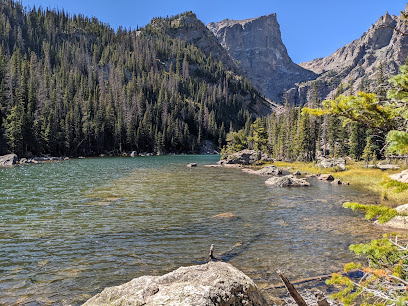
Many Parks Curve Overlook
Discover the breathtaking views and natural beauty at Many Parks Curve Overlook in Rocky Mountain National Park, a must-visit scenic spot for every traveler.
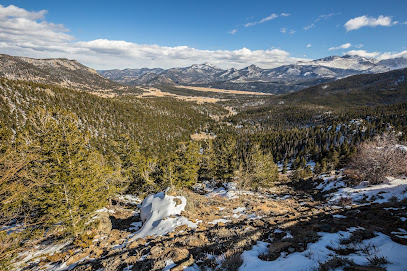
Saint Catherine's Chapel on the Rock
Explore the serene beauty of Saint Catherine's Chapel on the Rock, a stunning architectural gem nestled in the heart of Rocky Mountain National Park.
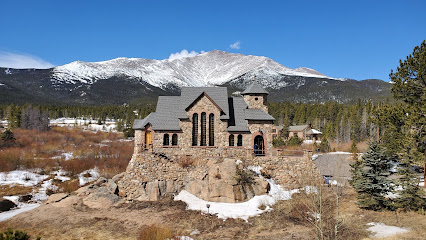
Images of Rocky Mountain National Park
Experience the vibrant artistry inspired by the stunning landscapes of Rocky Mountain National Park at Images of Rocky Mountain National Park gallery.
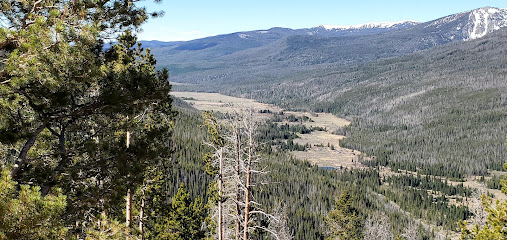
Rocky Mountain Day Hikes, a Website of hiking trails in Rocky Mountain National Park
Discover the breathtaking beauty of Rocky Mountain National Park with stunning hiking trails designed for all levels of adventurers and nature lovers.
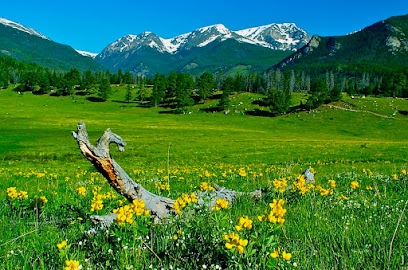
Unmissable attractions to see
Arapaho and Roosevelt National Forests and Pawnee National Grassland
Discover the breathtaking beauty and diverse wildlife of the Arapaho and Roosevelt National Forests, a premier destination for outdoor adventures in Colorado.
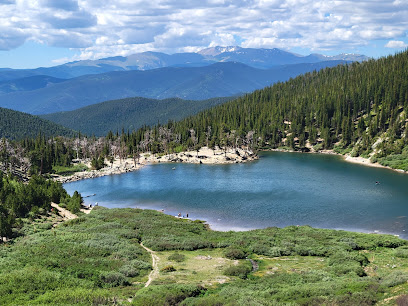
Bear Lake Trailhead
Discover the breathtaking beauty of Bear Lake Trailhead in Rocky Mountain National Park, a top destination for hiking and nature exploration.
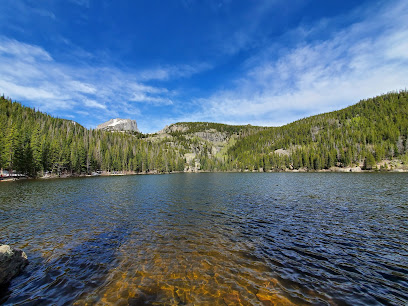
Rocky Mountain Arsenal National Wildlife Refuge
Explore the breathtaking Rocky Mountain Arsenal National Wildlife Refuge, a wildlife haven offering stunning landscapes and diverse species near Denver, Colorado.
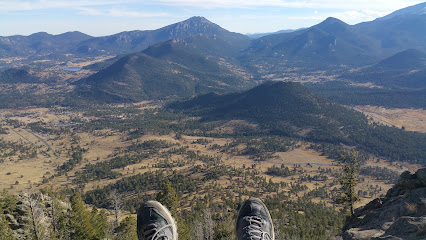
Beaver Meadows Visitor Center
Experience the stunning beauty of Rocky Mountain National Park at Beaver Meadows Visitor Center, your ultimate guide to adventure and exploration.
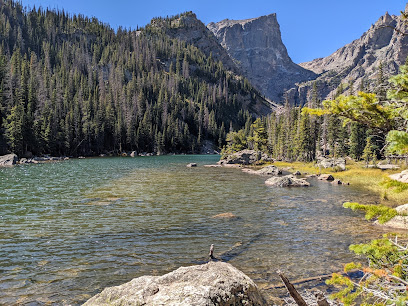
Estes Park
Explore Estes Park, Colorado – the breathtaking gateway to Rocky Mountain National Park, where adventure and scenic beauty await every traveler.
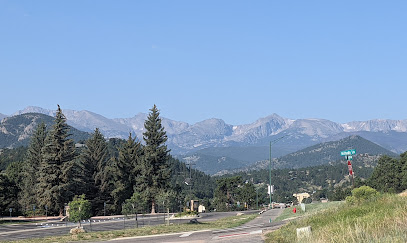
Estes Park Visitor Center
Discover the Estes Park Visitor Center - your essential guide to exploring the stunning landscapes and adventures in Colorado's Rocky Mountains.
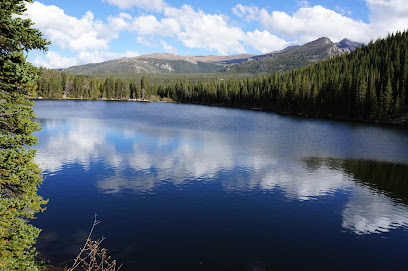
Many Parks Curve Overlook
Experience breathtaking views at Many Parks Curve Overlook, a scenic gem in Estes Park, Colorado, surrounded by the majestic Rocky Mountains.
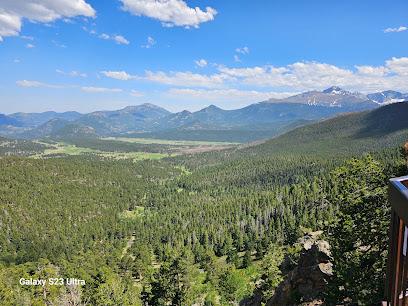
Estes Park Aerial Tramway
Experience breathtaking views and adventure at the Estes Park Aerial Tramway, your gateway to the stunning Rocky Mountains in Colorado.
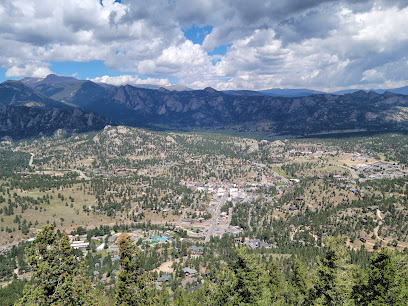
Many Parks Curve Overlook
Explore the stunning Many Parks Curve Overlook in Rocky Mountain National Park for breathtaking views and unforgettable natural beauty.
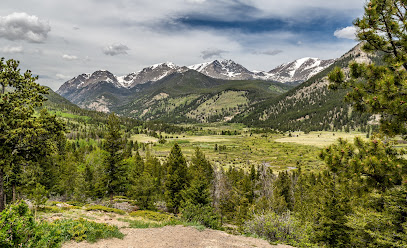
Fall River Visitor Center
Explore the gateway to Rocky Mountain National Park at Fall River Visitor Center, your source for maps, tips, and unforgettable adventures in nature.
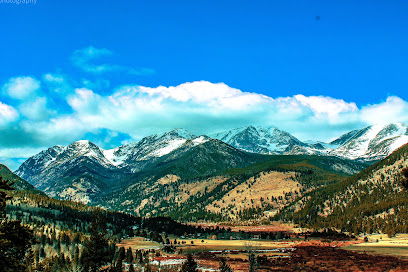
National Park Gateway Stables
Experience the breathtaking beauty of Rocky Mountain National Park with unforgettable horseback riding adventures at National Park Gateway Stables.
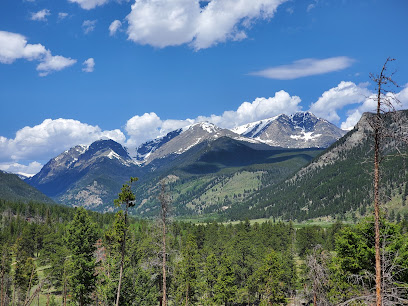
Rainbow Curve Overlook
Discover Rainbow Curve Overlook, a breathtaking viewpoint in Rocky Mountain National Park, offering stunning vistas and unforgettable photo opportunities.
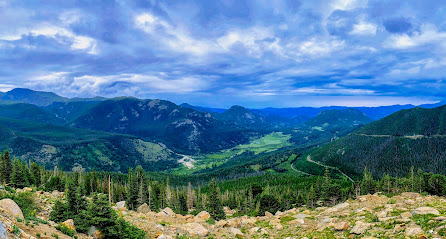
Bond Park
Discover tranquility at Bond Park, a scenic oasis in Estes Park, Colorado, perfect for relaxation, outdoor fun, and community events.
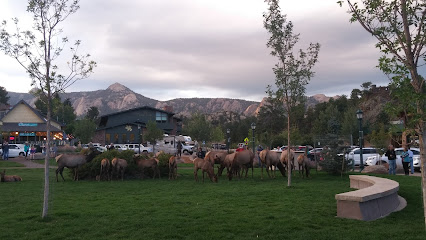
Saint Catherine's Chapel on the Rock
Experience the tranquil beauty of Saint Catherine's Chapel on the Rock amidst the stunning Colorado Rockies, a perfect blend of nature and spirituality.
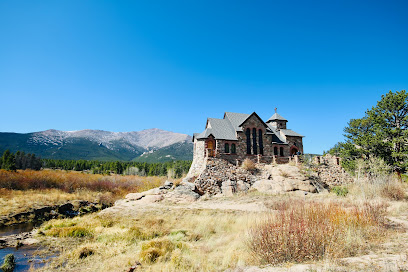
Lily Lake
Experience the tranquility of Lily Lake in Estes Park, a perfect hiking and picnic destination surrounded by the breathtaking Rocky Mountains.
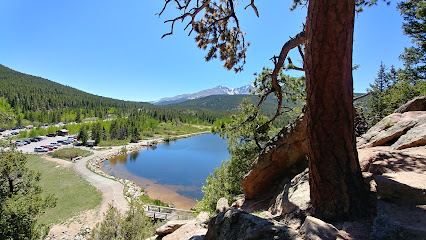
Essential places to dine
Himalayan Curry & Kebob
Experience authentic Indian and Nepalese flavors at Himalayan Curry & Kebob in scenic Estes Park - a must-visit dining destination.
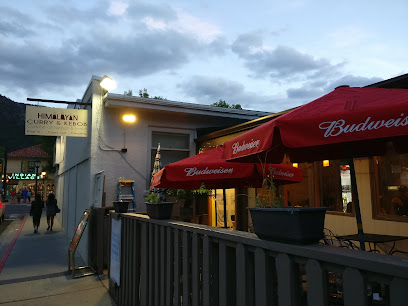
Smokin' Dave's BBQ - ESTES PARK
Discover mouthwatering barbecue at Smokin' Dave's BBQ in Estes Park - where flavor meets Colorado charm.
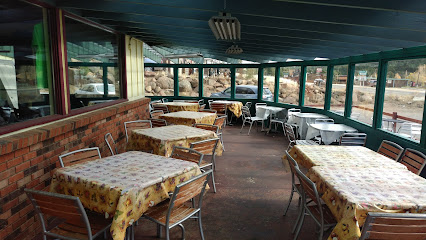
Claire's Restaurant and Bar
Discover Claire's Restaurant and Bar - where American cuisine meets stunning mountain views in Estes Park.
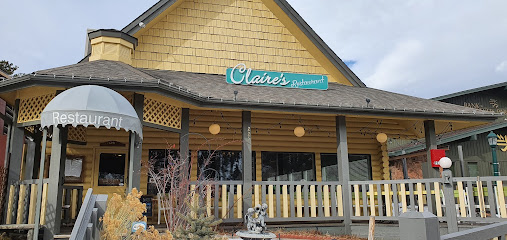
Antonio's Real New York Pizza
Experience the taste of Italy at Antonio's Real New York Pizza in Estes Park—delicious pizza made from authentic recipes.
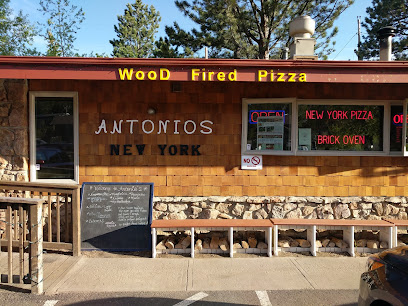
The Egg of Estes
Savor delicious breakfasts made with fresh ingredients at The Egg of Estes—your go-to spot in beautiful Estes Park.

Big Horn Restaurant
Experience family-friendly dining at Big Horn Restaurant in Estes Park with delicious American cuisine perfect for all tastes and budgets.
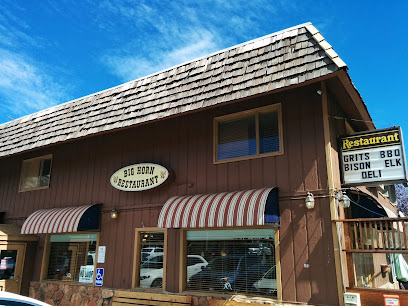
The Wapiti Colorado Pub
Discover local brews and comfort food at The Wapiti Colorado Pub in Estes Park - where flavor meets adventure.
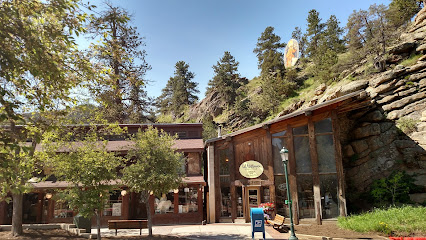
Poppy's Pizza & Grill
Discover Poppy's Pizza & Grill in Estes Park for unique pizzas and a vibrant bar experience surrounded by breathtaking mountain views.
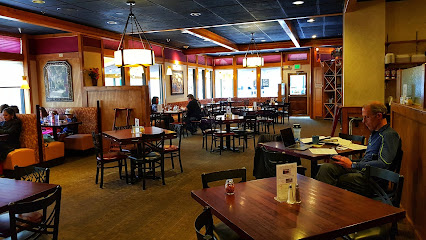
The Grubsteak Restaurant
Discover The Grubsteak Restaurant in Estes Park – where exceptional steaks meet warm hospitality amidst stunning mountain views.
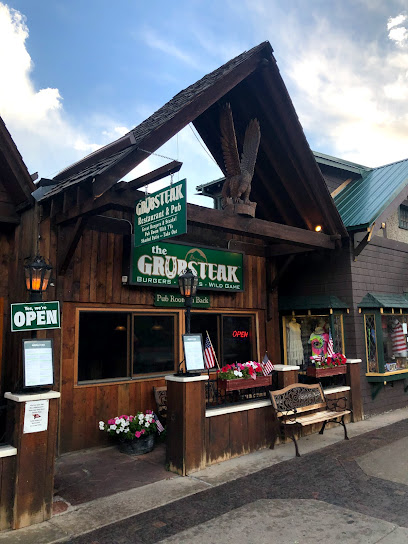
Notchtop Bakery & Cafe
Experience organic breakfast delights at Notchtop Bakery & Cafe in Estes Park - where every bite celebrates local flavors!

Estes Park Pie Shop & Diner (You Need Pie!)
Experience mouthwatering pies and hearty meals at Estes Park Pie Shop & Diner - A delicious stop in beautiful Colorado!
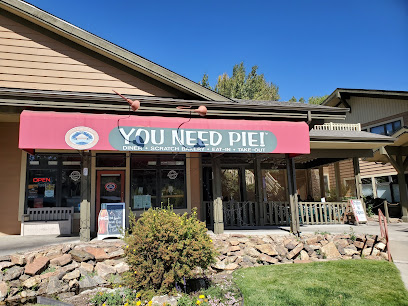
The Rock Inn Mountain Tavern
Experience the best of American cuisine and craft brews at The Rock Inn Mountain Tavern in Estes Park – your cozy retreat after exploring nature's wonders.
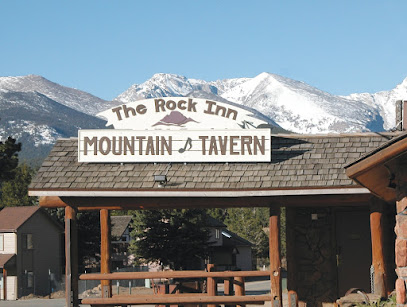
Mountain Home Cafe
Experience the flavors of America at Mountain Home Cafe in Estes Park – where breakfast dreams come true amidst stunning mountain scenery.
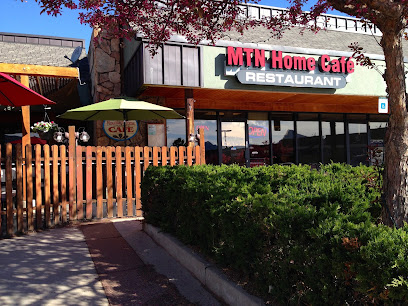
Nepal's Cafe
Experience authentic Nepalese cuisine at Nepal's Cafe in Estes Park—where each dish tells a story from the Himalayas.

Hunters Chop House
Discover culinary excellence at Hunters Chop House, where expertly grilled steaks and local flavors meet stunning mountain views in Estes Park.
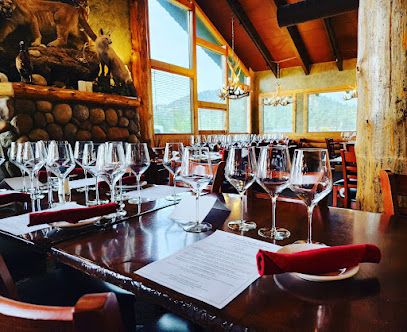
Markets, malls and hidden boutiques
Estes Park Mountain Shop
Explore the great outdoors with top-notch gear from Estes Park Mountain Shop, your ultimate destination for adventure in the Rockies.
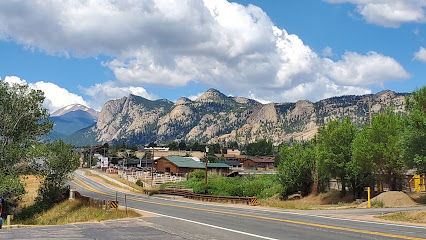
Brownfield's - Souvenirs & Outdoor Gear
Explore Brownfield's in Estes Park for unique souvenirs and quality outdoor gear, embodying the spirit of Colorado's breathtaking landscapes.
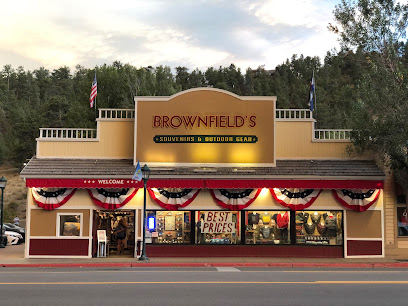
Red Rose Rock Shop
Explore the enchanting Red Rose Rock Shop in Estes Park, Colorado, for unique gemstones, minerals, and local treasures that capture the spirit of nature.
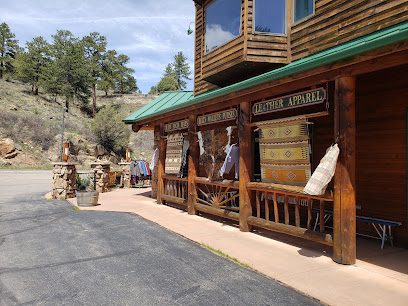
Rocky Mountain Gateway
Explore the treasures of Rocky Mountain Gateway, your one-stop shop for unique gifts, camping gear, and authentic Native American crafts in Estes Park, Colorado.
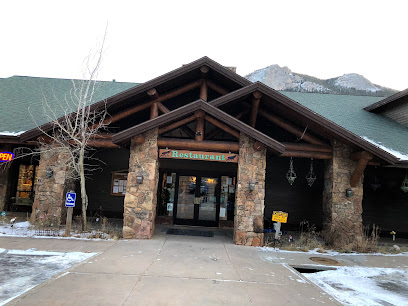
Trendz At The Park
Explore a charming blend of home goods, clothing, and gifts at Trendz At The Park in Estes Park, Colorado, a unique shopping experience awaits.

The Trading Post of the Rockies
Explore The Trading Post of the Rockies for unique gifts and local crafts that capture the essence of Colorado's picturesque charm.
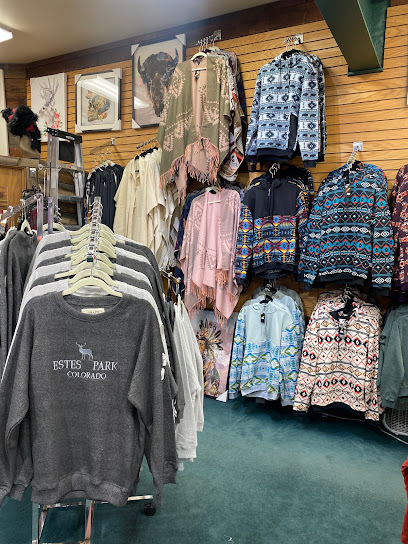
ESTES ARK Stuffed Animals, Toys, Antiques & Miniature Shop
Discover a treasure trove of stuffed animals, toys, antiques, and collectibles at ESTES ARK in Estes Park, Colorado, a must-visit for families and tourists.
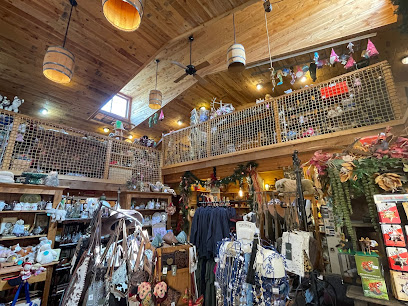
Wild Horse Gift Shop
Explore Wild Horse Gift Shop in Estes Park for unique souvenirs and local crafts that capture the spirit of the Rocky Mountains.
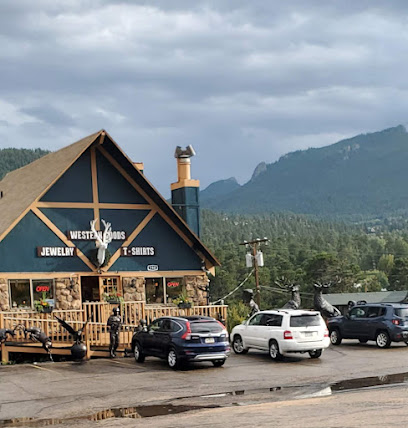
Estes Village
Explore Estes Village for unique gifts and local crafts that showcase the spirit of Estes Park, Colorado.
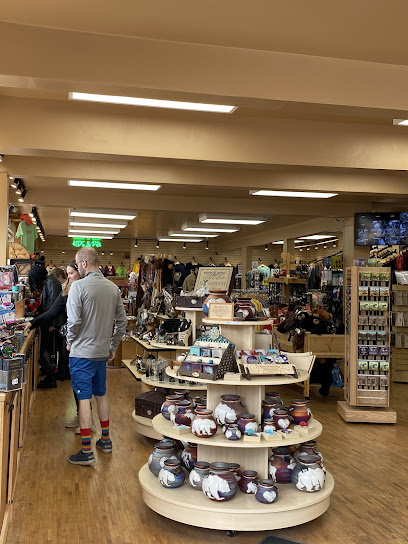
Rocky Mountain Tops
Explore Rocky Mountain Tops in Estes Park for unique clothing, gifts, and a true taste of Colorado's majestic landscapes.
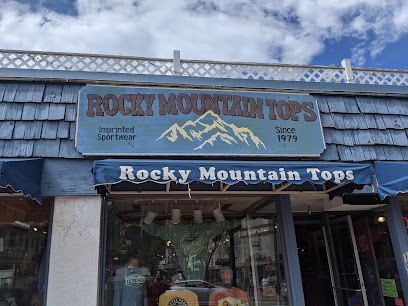
The Mad Moose
Explore The Mad Moose for top outdoor gear and unique souvenirs in Estes Park, the gateway to Rocky Mountain National Park.
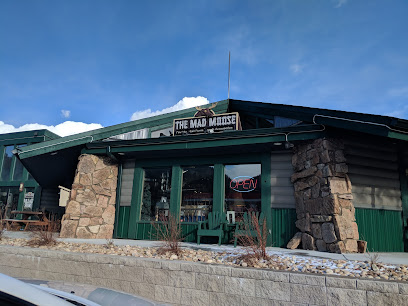
The Village Store of Estes Park
Discover unique clothing and gifts at The Village Store of Estes Park, a charming shopping spot that embodies the spirit of Colorado.

Estes Park Souvenirs
Discover unique keepsakes and local crafts that embody the spirit of Estes Park at Estes Park Souvenirs.

Trail Ridge Store
Explore unique gifts and local treasures at Trail Ridge Store, the charming gift shop in Estes Park, Colorado, surrounded by breathtaking mountain views.
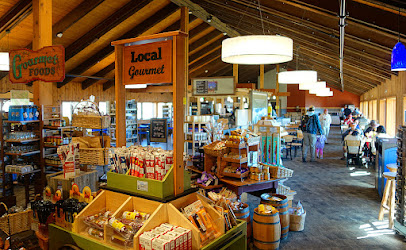
Mt Everest Gift House
Explore the enchanting Mt Everest Gift House in Estes Park for unique rocks, jewelry, and clothing that capture Colorado's natural beauty.
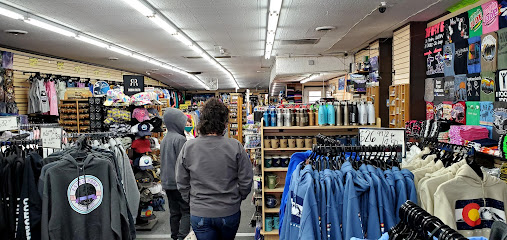
Essential bars & hidden hideouts
Himalayan Curry & Kebob
Experience authentic Indian and Nepalese flavors at Himalayan Curry & Kebob in Estes Park, where every dish tells a story of rich culinary traditions.
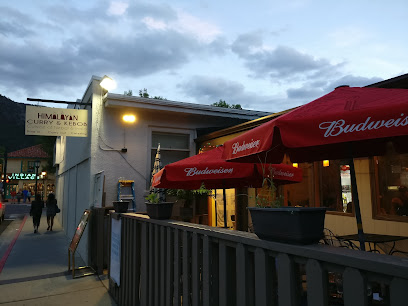
Smokin' Dave's BBQ - ESTES PARK
Discover the unforgettable smoky flavors of Smokin' Dave's BBQ in Estes Park, where authentic barbecue meets the charm of Colorado.
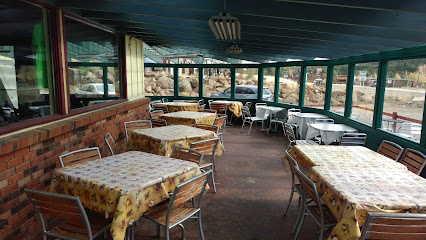
Ed's Cantina & Grill
Experience authentic Mexican cuisine at Ed's Cantina & Grill in Estes Park, where vibrant flavors meet a cozy mountain setting.
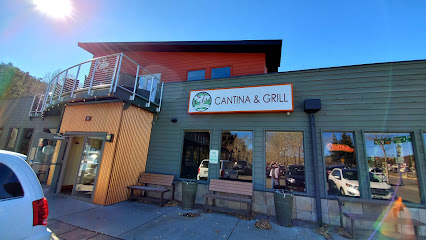
The Egg of Estes
Discover a delightful breakfast experience at The Egg of Estes, where hearty meals meet the stunning backdrop of the Rocky Mountains.

Penelope's Old Time Burgers
Experience the ultimate burger bliss at Penelope's Old Time Burgers in Estes Park, where flavor meets nostalgia in a charming setting.
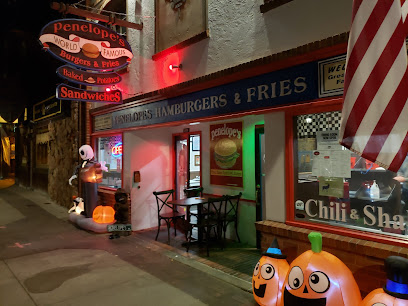
The Wapiti Colorado Pub
Experience the essence of Colorado at The Wapiti Pub, your go-to spot for craft brews and delicious bites in Estes Park.
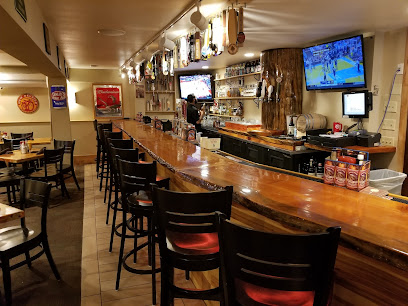
Lonigans Saloon Nightclub & Grill, An Irish Pub
Discover the vibrant atmosphere of Lonigans Saloon Nightclub & Grill, a perfect blend of Irish pub charm and delightful grill cuisine in Estes Park.
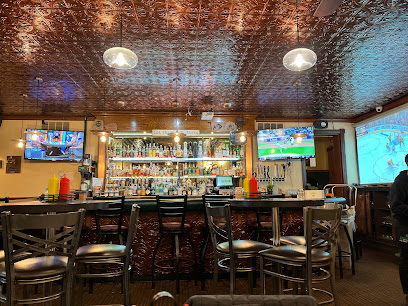
The Rock Inn Mountain Tavern
Discover the charm of The Rock Inn Mountain Tavern, where authentic American cuisine meets a breathtaking mountain backdrop in Estes Park.
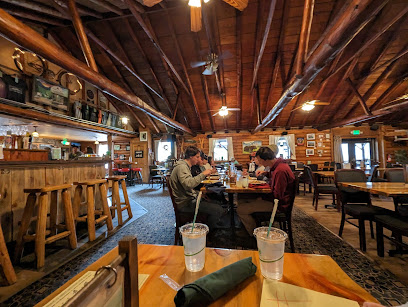
Nepal's Cafe
Experience authentic Nepalese cuisine in the heart of Estes Park, where rich flavors and warm hospitality await every visitor.

Hunters Chop House
Experience the ultimate American steakhouse dining at Hunters Chop House in Estes Park, where flavor meets breathtaking mountain views.
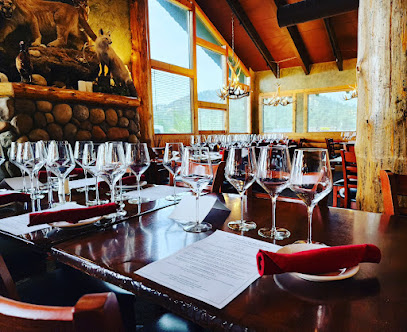
Coffee on the Rocks
Experience the perfect blend of great coffee and stunning mountain views at Coffee on the Rocks in Estes Park, Colorado.
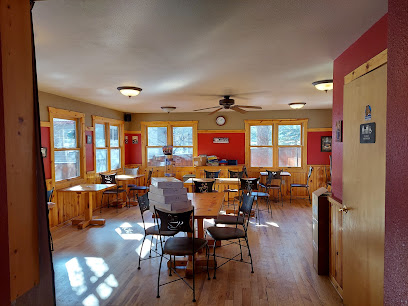
The Wild Rose Restaurant
Experience a delightful fusion of American and European cuisine at The Wild Rose Restaurant in Estes Park, surrounded by stunning Rocky Mountain views.
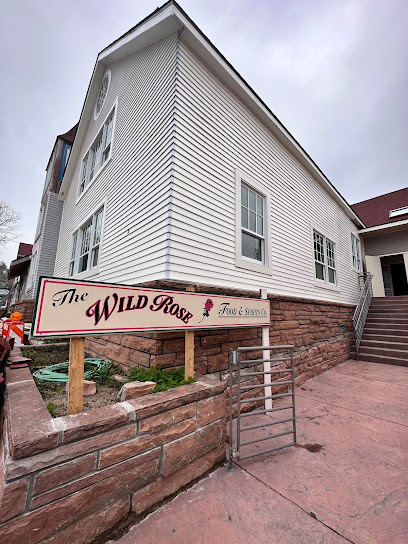
Twin Owls Steakhouse
Experience the finest steaks in Estes Park at Twin Owls Steakhouse, where every meal is a celebration of flavor set against a stunning mountain backdrop.
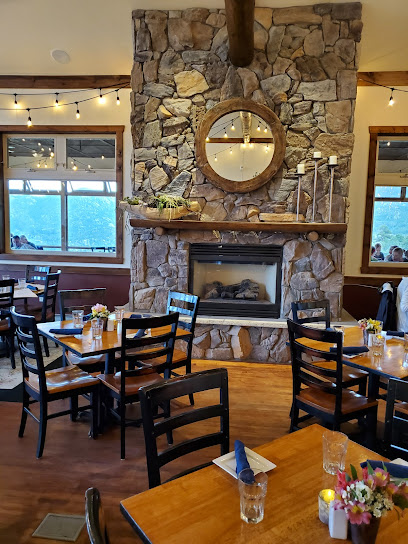
Cousin Pat's Pub & Grill
Experience the charm of Cousin Pat's Pub & Grill, where hearty American cuisine meets the stunning beauty of Estes Park.
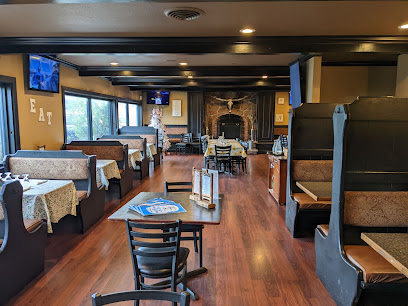
Wheel Bar
Discover the vibrant atmosphere and expertly crafted cocktails at Wheel Bar, the heart of Estes Park's nightlife.
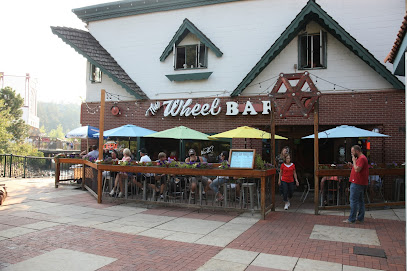
Local Phrases about Rocky Mountain National Park
-
- HelloHowdy
[haʊ-di] - GoodbyeSee ya later
[si jə ˈleɪ.tər] - YesYup
[jʌp] - NoNope
[noʊp] - Please/You're welcomePlease/You're welcome
[pliːz/jʊər ˈwɛlkəm] - Thank youThanks a bunch
[θæŋks ə bʌntʃ] - Excuse me/SorryPardon me
[ˈpɑrdn mi] - How are you?Howdy, partner?
[haʊ-di, ˈpɑːrtnər] - Fine. And you?Just hunky dory. And you?
[dʒʌst ˈhʌŋki ˈdɔri. ænd jʌ] - Do you speak English?Y'all speak English?
[jɔːl spiːk ˈɪŋɡlɪʃ] - I don't understandI ain't catchin' on
[aɪ ˈeɪnt ˈkætʃɪn ɑn]
- HelloHowdy
-
- I'd like to see the menu, pleaseI reckon I'll take a gander at the menu, if you don't mind
[aɪ ˈrɛkən aɪl teɪk ə ˈɡændər ət ðə ˈmɛnjuː ɪf jʊ doʊnt maɪnd] - I don't eat meatI don't fancy no meat
[aɪ doʊnt ˈfænsi noʊ mit] - Cheers!Bottoms up!
[ˈbɑtəmz ʌp] - I would like to pay, pleaseI reckon it's time to settle up
[aɪ ˈrɛkən ɪts taɪm tuː ˈsɛtl ʌp]
- I'd like to see the menu, pleaseI reckon I'll take a gander at the menu, if you don't mind
-
- Help!S.O.S!
[ɛs.oʊ.ɛs] - Go away!Scram!
[skræm] - Call the Police!Ring the Sheriff!
[rɪŋ ðə ˈʃɛrɪf] - Call a doctor!Holler for the Doc!
[ˈhɑlər fɔr ðə dɑk] - I'm lostI'm plumb lost
[aɪm plʌm lɔst] - I'm illI'm feelin' poorly
[aɪm ˈfilɪn ˈpʊrli]
- Help!S.O.S!
-
- I'd like to buy...I'm fixin' to purchase...
[aɪm ˈfɪksɪn tuː ˈpɜːrtʃəs] - I'm just lookingI'm just browsin'
[aɪm dʒʌst ˈbraʊzɪn] - How much is it?What's the damage?
[wɑts ðə ˈdæmɪʤ] - That's too expensiveThat's mighty pricey
[ðæts ˈmaɪti ˈpraɪsi] - Can you lower the price?Can y'all cut me a deal?
[kæn jɔːl kʌt mi ə dil]
- I'd like to buy...I'm fixin' to purchase...
-
- What time is it?What's the hour?
[wɑts ðə ˈaʊər] - It's one o'clockIt's high noon
[ɪts haɪ nun] - Half past (10)Halfway to (10)
[ˈhæfˌweɪ tuː (ten)] - MorningMornin'
[ˈmɔrnɪn] - AfternoonAfternoon
[ˌæftərˈnun] - EveningEvenin'
[ˈivnɪn] - YesterdayYest'day
[ˈjɛstˌdeɪ] - TodayToday
[təˈdeɪ] - TomorrowMorrow
[ˈmɔroʊ] - 1One
[wʌn] - 2Two
[tuː] - 3Three
[θriː] - 4Four
[fɔːr] - 5Five
[faɪv] - 6Six
[sɪks] - 7Seven
[ˈsɛvən] - 8Eight
[eɪt] - 9Nine
[naɪn] - 10Ten
[tɛn]
- What time is it?What's the hour?
-
- Where's a/the...?Where's the... at?
[wɛərz ðə æt] - What's the address?What's the street?
[wɑts ðə strit] - Can you show me (on the map)?Can y'all point me out (on the map)?
[kæn jɔːl pɔɪnt mi aʊt ɒn ðə mæp] - When's the next (bus)?When's the next stagecoach?
[wɛnz ðə nɛkst ˈsteɪdʒˌkoʊtʃ] - A ticket (to ....)A pass (to ....)
[ə pæs (tu ....)]
- Where's a/the...?Where's the... at?
History of Rocky Mountain National Park
-
Long before the establishment of the Rocky Mountain National Park, the area was inhabited by Indigenous peoples, including the Ute and Arapaho tribes. These early inhabitants relied on the land's rich resources for hunting, fishing, and gathering. They left behind numerous artifacts, petroglyphs, and trails that reveal their deep connection to the land.
-
The Rocky Mountain region became known to European explorers in the early 19th century. Explorers like Major Stephen H. Long and John C. Fremont ventured into the area, mapping the terrain and providing valuable information about its geography and natural resources. Their reports piqued the interest of settlers and adventurers alike.
-
The Homestead Act of 1862 encouraged westward expansion and brought settlers to the Rocky Mountain region. Many families moved to the area in search of land and opportunity. The act provided 160 acres of public land to settlers for a small fee, resulting in the establishment of homesteads and small communities within the park's current boundaries.
-
Estes Park, located at the eastern entrance of Rocky Mountain National Park, played a significant role in the park's history. Enos Mills, known as the 'Father of Rocky Mountain National Park,' was a naturalist and conservationist who tirelessly advocated for the creation of the park. His efforts culminated in the establishment of the park in 1915.
-
On January 26, 1915, President Woodrow Wilson signed the bill establishing Rocky Mountain National Park. The park was created to preserve the natural beauty and ecological diversity of the region and to provide a space for public enjoyment and education. It encompasses more than 400 square miles of stunning landscapes, including towering peaks, alpine lakes, and diverse wildlife.
-
Completed in 1932, Trail Ridge Road is a marvel of engineering that spans the park and reaches elevations over 12,000 feet. Known as the 'Highway to the Sky,' it offers breathtaking views and access to the park's alpine tundra. The road was designed to harmonize with the natural landscape and has since become one of the park's most iconic features.
-
During World War II, Rocky Mountain National Park served as a training ground for the 10th Mountain Division, an elite group of soldiers trained in mountain and winter warfare. The park's challenging terrain and harsh winter conditions provided the perfect environment for their rigorous training regimen.
-
In recent decades, Rocky Mountain National Park has faced numerous environmental challenges, including climate change, increased visitor numbers, and wildlife management issues. Modern conservation efforts focus on preserving the park's delicate ecosystems, promoting sustainable tourism, and ensuring that future generations can continue to enjoy its natural wonders.
Rocky Mountain National Park Essentials
-
Rocky Mountain National Park is located in northern Colorado, about 76 miles northwest of Denver. The nearest major airport is Denver International Airport (DEN). From Denver, you can take a rental car or shuttle service to Estes Park, which is the main gateway town to the park. The drive from Denver to Estes Park takes approximately 1.5 to 2 hours. Alternatively, you can take the Estes Park Shuttle or the Bustang, a public bus service, directly to Estes Park.
-
Once in Estes Park, the easiest way to get around Rocky Mountain National Park is by car. There are several car rental agencies in Estes Park. The park also offers a free shuttle bus service during the summer months, which connects major trailheads and visitor centers. For a more eco-friendly option, consider biking, although be aware that some trails may have restrictions on bicycle access.
-
The official currency is the United States Dollar (USD). Credit and debit cards are widely accepted in Estes Park and within Rocky Mountain National Park. However, it's advisable to carry some cash for smaller establishments and park fee stations that may not accept cards. ATMs are available in Estes Park.
-
Rocky Mountain National Park is generally a safe destination, but visitors should exercise standard precautions. Be aware of wildlife and maintain a safe distance from animals. While the park itself does not have high-crime areas targeting tourists, always secure your belongings and do not leave valuables in your car. In Estes Park, crime rates are relatively low, but it's still smart to stay vigilant, especially in crowded areas.
-
In case of an emergency, dial 911 for immediate assistance. Park rangers are available throughout the park and can assist with any issues. There are medical facilities in Estes Park, including Estes Park Health, which can handle most medical emergencies. It is recommended to have travel insurance that covers medical emergencies, especially for activities like hiking and climbing.
-
Fashion: Do wear layers and be prepared for sudden weather changes. Avoid wearing cotton for hikes; synthetic materials are better. Religion: While there are no specific religious customs to be aware of, do show respect at any historic or cultural sites. Public Transport: Do use the free shuttle bus service within the park during the summer. Don't rely solely on public transport to get to more remote areas. Greetings: Do greet people with a friendly 'Hello' or 'Hi.' Don't be surprised if you receive a warm welcome; locals are generally very friendly. Eating & Drinking: Do try local cuisine in Estes Park, including trout and elk dishes. Don't feed wildlife or leave food unattended, as this can attract animals and create dangerous situations.
-
To experience Rocky Mountain National Park like a local, visit during the shoulder seasons (spring and fall) to avoid the crowds. Early mornings and weekdays are generally less busy. Take the time to explore lesser-known trails like the Ute Trail or the Lumpy Ridge area. Also, engage with park rangers and attend interpretive programs to gain deeper insights into the park's natural history and ecology. Don't miss the opportunity to stargaze; the park is an excellent location for night sky watching.
Nearby Cities to Rocky Mountain National Park
-
Things To Do in Boulder
-
Things To Do in Fort Collins
-
Things To Do in Denver
-
Things To Do in Vail
-
Things To Do in Steamboat Springs
-
Things To Do in Breckenridge
-
Things To Do in Laramie
-
Things To Do in Cheyenne
-
Things To Do in Leadville
-
Things To Do in Monument
-
Things To Do in Aspen
-
Things To Do in Glenwood Springs
-
Things To Do in Colorado Springs
-
Things To Do in Crested Butte
-
Things To Do in Salida

